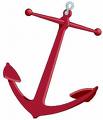 Branding: Taking a
single uniqueness, which the public wants, and promoting it
consistently. Branding: Taking a
single uniqueness, which the public wants, and promoting it
consistently.
Want to confuse yourself? Ask
ten friends to define branding. I predict eight to ten different
answers.
My mission—which I’ve obviously
chosen to accept—is to give a brief definition of branding you can keep
in your head after you’ve read this article.
Branding has been a hot buzzword
for at least ten years, so it’s not new. But it’s far older than that.
In 1904 Ivan Pavlov won the Noble prize for his research into branding.
You’ve heard about his dogs. That’s branding. Ring the bell, give the
dogs meat. Do it enough and the dogs salivate without the beef.
Psychologists call this planting
an associative memory.
“I’m Tom Bodett for _______ and
we’ll leave the light on for ya.” Most of you instantly inserted Motel
6 into the blank. Some of you even hear the folksy music in your head
and are thinking about a “clean comfortable room” and “the lowest price
of any national chain.”
Mention Stephen King and we
think horror. Nicholas Sparks equals romance (and tears).
How do we plant an associative
memory into the mind of a reader, agent, or editor?
Consistency, frequency,
and anchoring.
Consistency:
Give people the same message every time. Did you know Pavlov did his
experiment again with circles? Show dogs the circles then give them the
meat. Then he changed the circles to ovals. Stopped working. The
consistency wasn’t there. This is why it’s tough—but not impossible—to
brand yourself as a nonfiction writer and a fiction writer at the same
time. Or to switch genres. Once you get into the mind with a strong
associate memory, it’s difficult to change it, or even add to it. For
example, when you hear Harry Houdini, you think magician. But who can
remember that he was the first person to fly an airplane in Australia?
Even most Australians don’t know that.
Frequency: This is easy. Keep your message out there. Often.
This is easy. Keep your message out there. Often.
Anchoring:
This is the tough one. Many people think by
throwing together some
potent colors and coming up with a catchy tagline they’ve branded
themselves. Huh uh. Anchoring is divided into three parts:
|
1. Anchor
to something no one else has anchored to. You must be unique. Telling
people you’re the “Passionate author who shares the deep love of Jesus”
will not be remembered. Showing up in your kilt at the ACFW awards
dinner will. I’m serious. Chip MacGregor is bright (other than the fact
he likes the Oregon Ducks). He knew what he was doing. Who is he
promoting/branding himself to? Editors and writers. Do you think he
makes an impact when he wears his kilt? Is it memorable? Unique?
2. Anchor to something the public wants. Picking on Chip again, people
want entertainment, they want to be surprised. Are they, when he steps
out in his MacGregor tartan? Of course. They love it. Randy Ingermanson
has branded himself as the Snowflake guy to writers and editors. At the
’07 ACFW conference, I smiled as I saw his branding had become so
successful it was parodied from the stage during the opening session.
3. Anchor to something you already are. Anchor to something you already
are. No, that wasn’t a typo. It bears repeating because this is where
more authors stumble. Many try to create a brand out of nothing:
“Suspense that sucks you in and won’t let you go! Never! Ever! Really!”
“Making you hyperventilate after every chapter!”
“Romance that makes you a mush cake every time!”
This is not branding. You can’t
create or make up a brand. You can only discover and promote what
already is. I worked with an author recently who claimed she didn’t
have a brand, and there was no coherent theme connecting her three
novels. She was wrong. She has a powerful brand/theme, one with
universal appeal. She was thrilled after I showed her what it was. But
I didn’t create her brand, I simply pointed out what was already there.
Branding is taking the unique
elements about you and your writing that already exist and exposing
them to the world. Your brand is there; your job is to uncover it.
Yes, it’s a challenge
pinpointing what your brand is. Often we’re too close. Most people have
trouble reading the outside of the bottle when they’re standing inside.
So ask people close to you to describe your uniqueness. Brainstorm with
other authors about what sets you apart. Ask your editor, spouse, kids,
agent, and others.
Yeah, I know, we’ve only
scratched the surface. That’s why Amazon is packed with books on
branding. And why marketing people like me have jobs.
Next month: Web site mistakes
most authors make.
|








 Branding: Taking a
single uniqueness, which the public wants, and promoting it
consistently.
Branding: Taking a
single uniqueness, which the public wants, and promoting it
consistently. This is easy. Keep your message out there. Often.
This is easy. Keep your message out there. Often.